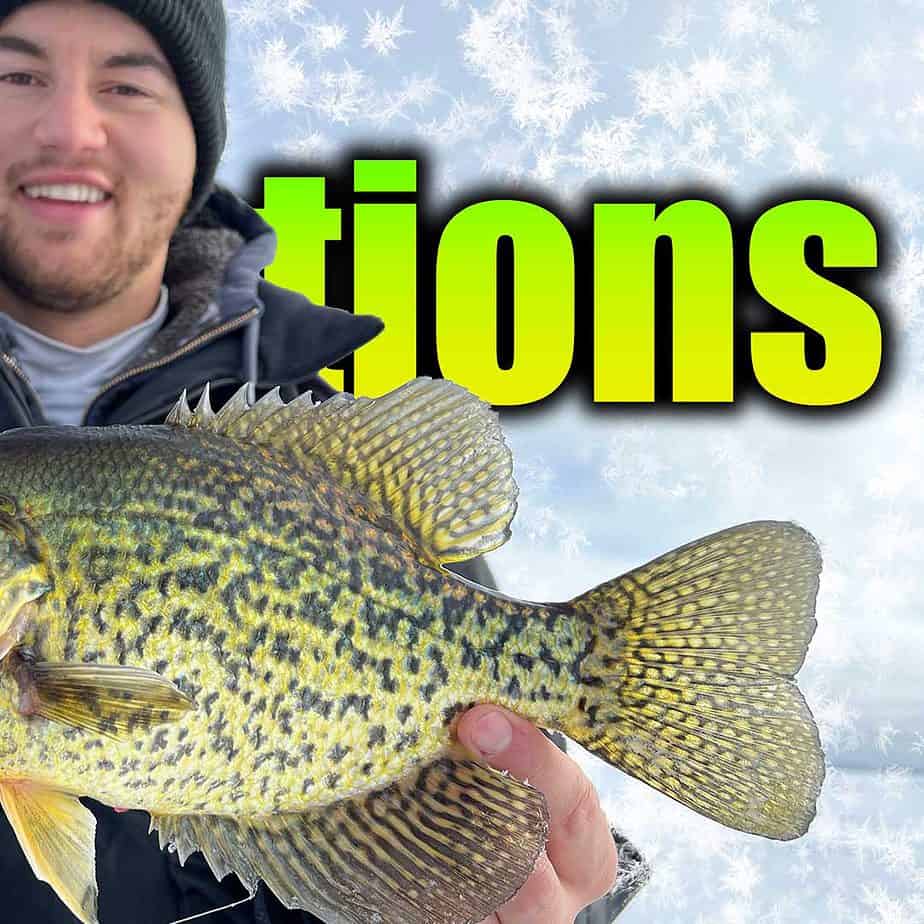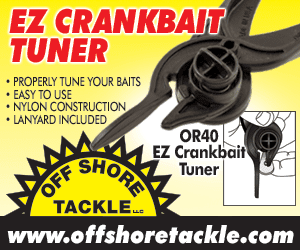There’s been a lot of talk in recent years about the panfish regulations here in our home state of Minnesota. What seems to be consensus amongst veteran anglers and biologists alike is that our current set of rules are far too liberal — particularly if we want to see our panfish populations sustained for future generations of fishermen.
Bottom line: Anglers are getting better and better at catching fish, and there’s nothing the fish can do to “fight back”, so to speak. Panfish can be particularly vulnerable to over-harvest during the winter and spring months, so it’s our job as fishermen to protect this valuable resource.
We wanted to help get the word out about the importance of conservation, so we reached out to a handful of ice pros and asked them their thoughts on a possible limit reduction for both crappies and sunfish. All of these guys are boots-on-the-ground type folks who have seen first-hand how fishing pressure and harvest have impacted some of their favorite fisheries here in the state of Minnesota.
We’re hoping this message doesn’t fall on deaf ears, as it’s an important topic for everyone who loves fishing in this region.
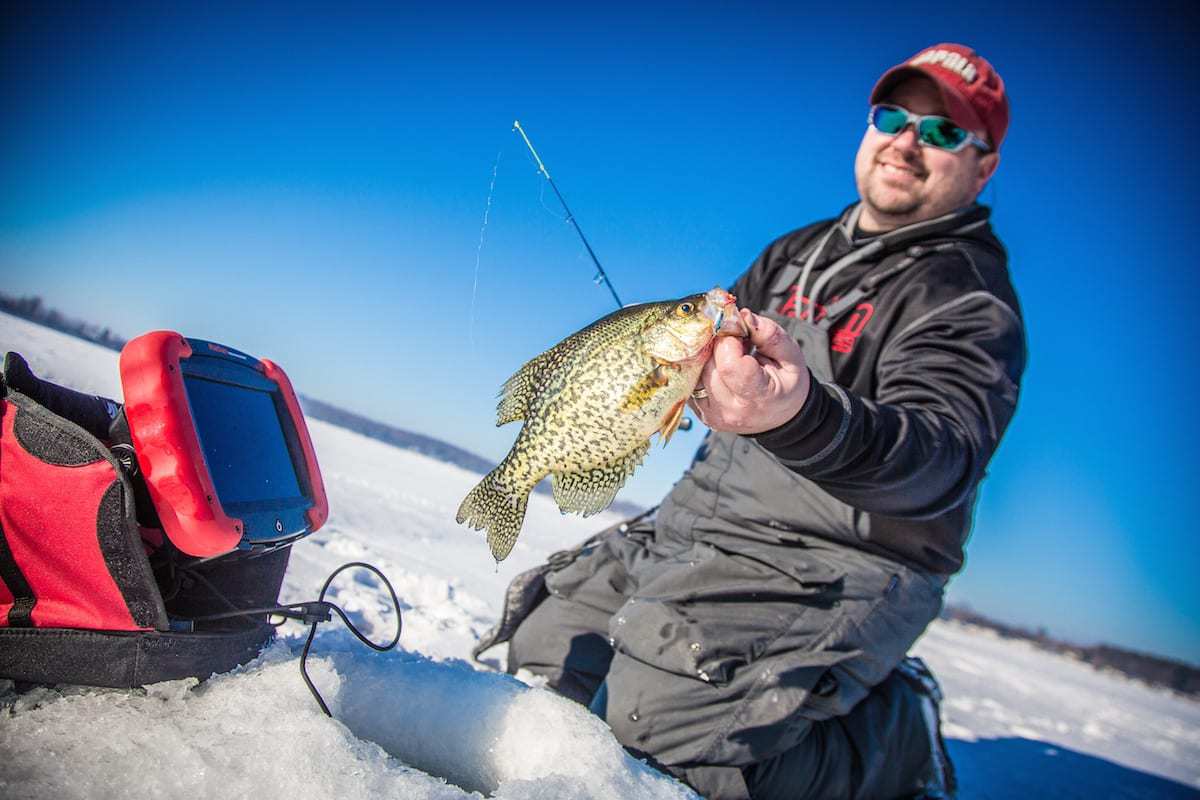
Joel Nelson – Joel Nelson Outdoors
I’m a big fan chaining the panfish regulations and reducing the overall bag limit on each species (Bluegill and Crappie) to 5 per person per day, with a possession limit of 10 each. Last year, I was able to feed my family of four a great meal of fish tacos, with sides, with five (5) 7-inch sunfish. It was a great test to see how far you could really make fish go, and even I was surprised on how much meat is really there. It’s a common misconception that you need a bucket-full of panfish to feed a group. Unless they’re eating nothing but fish, that just hasn’t lined up with what my experiences have been with group fish-frys.
Special regulation lakes (waters with a 5 fish limit) have long been a bullseye for those anglers looking to find quality fish, but it also presents an opportunity for abuse. This is doubly true during periods of panfish vulnerability, specifically winter fish when schooled and spring spawning times. Removing large males from the population promotes cuckholding, an effect that reduces the genetic viability of large bluegills, thus preventing them from ever re-appearing in systems where they’ve been over-exploited. (I can provide more information on this if needed). “High-grading” or selectively taking large individuals only during periods of vulnerability is a problem in such systems which would be solved by making all lakes of the same regulation.
I think that one more step needs to be taken as well, both for the resource and for education/management of angler attitudes. A “one-fish-over” regulation, call it 9”es, would have several positive effects. First and foremost it would prevent high-grading when fish are readily exploitable, and second, it would be an eye-opener to most anglers. To realize how truly rare a 10” fish is, anglers need to constantly measure their fish. I know from my own experience, that putting a ruler to gobs of 9+ inch fish, it takes a great many of them before you find a true trophy, and promotes the understanding that these are just as rare, valuable, and worthy of conservation as any 10lb walleye.
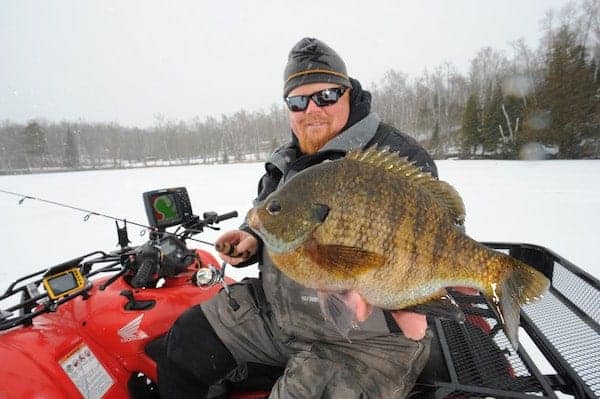
Brian Brosdahl – Bros Guide Service
One of the biggest issues we’re dealing with right now in Minnesota is stunted bluegill populations. I believe we should change the panfish regulations.
If big ‘gills aren’t present during the spawn to chase off the smaller fish, those small fish will use all their energy on the spawn (instead of actively feeding). This creates stunted, old looking bluegills throughout the system that cap the size structure of the entire population.
I would like to see the limits for both sunfish and crappies cut down to 5 apiece, particularly in my part of the state north of highway 210. I’ve also believed for many years that Minnesota should only allow one bluegill over 9 inches per angler. This would allow for someone to get a mount made up if they happen to catch a fish of a lifetime. The goal shouldn’t be to fillet and eat a limit of true trophies, even if it’s only 5 fish.
It’s incredible how many lakes used to have big bluegills in our region, that are now permanently fished-out.
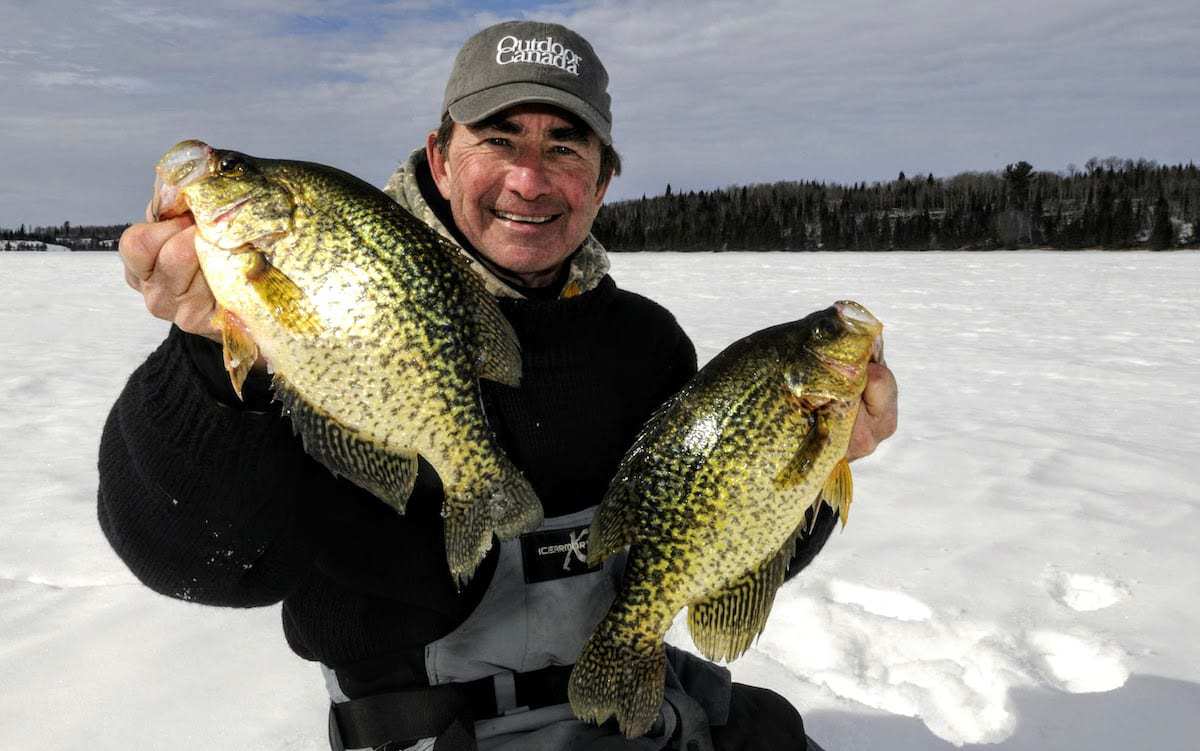
Gord Pyzer – Biologist & Outdoor Writer
There is no question that we can do a better job managing panfish populations with new panfish regulations for higher quality, but it is not always as easy as it first might seem.
On Rainy Lake and Lake of the Woods, for example, our biggest crappies are typically 14 plus years old. This means that if you keep a 14- or 15-inch crappie today, it will be 2031 before a fish hatched this year will replace it.
Also managing for high quality panfish populations demands considerations not usually necessary for bigger sport species like walleyes and bass. Crappies, in particular, are “sitting ducks” when they bunch up and congregate in deeper holes and pockets in the fall and winter because they suffer barotrauma much more easily than stronger, more physical fish.
On Sabaskong Bay, for example, our Lake of the Woods Assessment Unit once put an underwater camera under the ice and as far as they could see in any direction there were dead crappies floating belly up. These were fish ice anglers had caught, deemed to be too small, and released. But because they had been hooked in deeper water (often 25 – 30 feet) they suffered from barotrauma. Unlike more muscular bass, crappies have a difficult time swimming back down to the bottom after they’ve been released.
There are superb non-invasive tools like the Eco-Lessor that are effective, but few anglers use them. And if you talk to ice anglers, they’ll all tell you the fish they catch and release swim away safely, back down the hole. But the fact of the matter is they do not. They make it half way down, float back up and then drown under the ice. The underwater cameras showed it dramatically and conclusively.
It points to the need in many lakes, especially deeper crappie lakes, for anglers to keep the first 5 or 10 panfish they catch (whatever is the limit) and then call it a day with NO culling. But, would anglers accept this regulation? I am not sure they would.
If, for example, the limit is 10 fish, but you catch and release 30, culling up to your best 10, you’ve probably killed close to three limits and made any high quality management regulation totally meaningless.
Also, a good number, probably most of our crappie lakes in Northwestern Ontario only have relatively small lake sections conducive to crappie populations, not the whole lake. The fish are confined to small isolated sections. This, combined with the release problem above, is why they are subject to such intense “pulse fishing” and go through such dramatic boom and bust cycles and swings.

Steve Pennaz – Lake Commandos
I think our panfish populations are getting hammered.
I’ve spent a lot of time fishing special regulation lakes here in Minnesota that limit harvest to just 5 crappies per person. At first I wasn’t a big fan, but once I saw the positive affect it had on the fishery, I was all for it — and if we’re being honest, we don’t need more than five to have a good dinner. Anything after that is usually overkill.
“I can grow three 10-point bucks in the same time it takes to grow a one-pound bluegill.”
That’s a quote from a biologist I spoke with a few years back — the moral of the story: It takes a long time to grow big bluegills. Today, 10-inch bluegills are one of the holy grails of ice fishing, and we need to do a better job of protecting these fish before they are gone forever.
My ideal statewide panfish regulations would be 10 sunfish and 5 crappies. It’s a dramatic departure from our current set of rules, but we need to be more aggressive in preserving this resource for future generations.
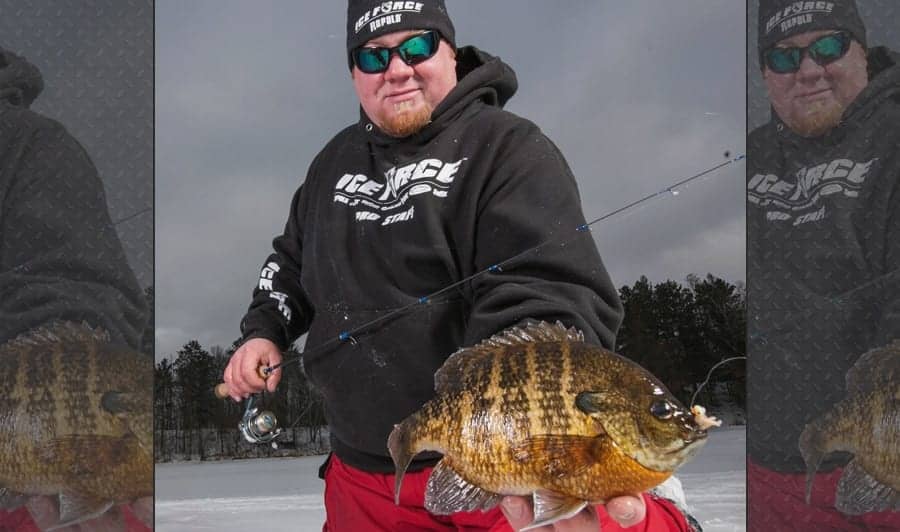
Brad Hawthorne – Hooked on the Ice
The most pressing issue we’re dealing with when it comes to our panfish resource is the the over-harvest of large bluegills. Studies have proven over-and-over that taking large males out of the system will permanently stunt the size structure of the bluegill population in a lake — we know this for a fact. So the question is: Why is it still allowed? It shouldn’t be. If we were permanently destroying walleye populations, fishermen in this state would be showing up with torches and pitchforks.
From a panfish regulations standpoint, I believe anglers should only be able to keep one gill over 10 inches each year period, and there should be special slots and limits in place on a case-by-case basis for various lakes. I would also love to see a “Legacy Lake” concept implemented on lakes that are known to carry massive bluegills. There would be no-harvest on large gills on these fisheries, in an effort to preserve these valuable resources for generations to come. Like I said earlier, in most cases (barring a freeze out), once the big bluegills are gone, they are gone forever.
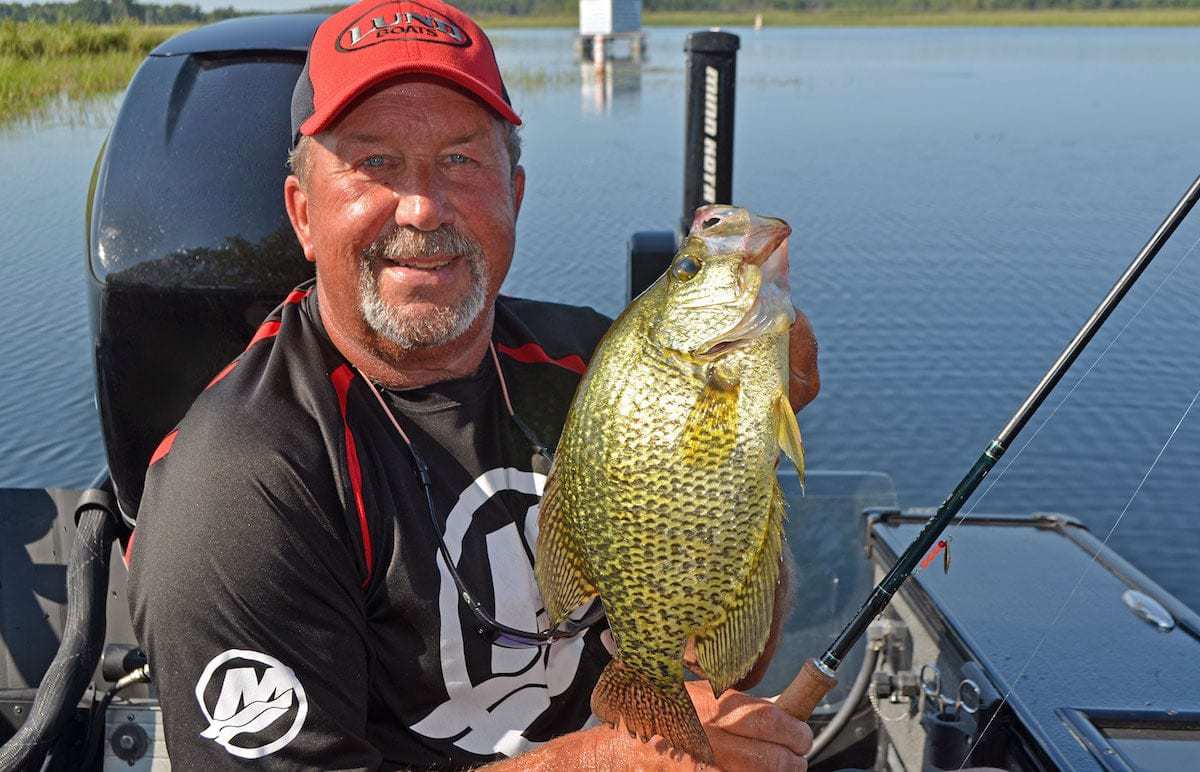
Tom Neustrom – Minnesota Fishing Connections
The days of packing your freezers with panfish are gone. Fishermen are getting better and better with each passing year. New rods and reels are coming out all the time — we have faster augers, new lures, and today’s electronics are insane! As anglers continue to improve, we need to make protecting our panfish populations a larger priority. Contrary to old-school beliefs, both crappies and bluegills are fragile fish — and they are especially vulnerable during the ice season.
Over the years, I’ve seen a lot of great panfish fisheries decimated by over-harvest. The problem with bluegills is you can permanently fish them out of a lake, and crappies can take several years to rebound after just one winter of heavy fishing pressure.
If I had to set a new panfish regulations for the state of Minnesota, I would make it 10 crappies and 10 bluegills. To me, this would be a good “compromise”. I think that best regulation would be 5 crappies and 10 bluegills, but I can’t see the public accepting a hard 50% cut in harvest limits. I would also be in favor of a 12 crappie limit that only allows for five crappies over 11 inches. The problem with wintertime slots, though, is they would be tough to enforce, as it can often be difficult getting an accurate measurement on iced-up panfish this time of year.
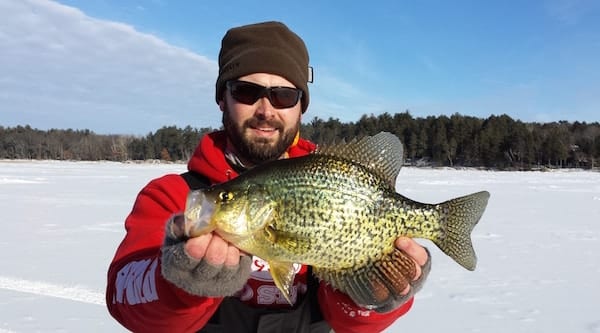
Jeremy Smith – Angling Edge
I like the idea of proposing new panfish regulations to improve the quality of our panfishing. Regarding bluegills, I’m not opposed to the 20 fish bag limit. There are a ton of lakes that are filled with small sunfish and if anglers want to keep 6 & 7 inch sunfish, my guess would be a good thing to keep a pile. On the other hand, I’m strongly in favor of reducing harvest of big bluegills. In my opinion, it’s often harder to come by one pound bluegills than it is 50” muskies. I like the idea of 20 bag limit with only 5 fish over 8”. Combining new regs with messaging that encourages anglers to release trophy bluegills could improve the quality of bluegill fishing down the road.
I don’t know have a good sense on the best way to manage crappies, they are abundant and grow relatively fast. I’m all about releasing big fish so they can be recycled for other anglers to catch. From my observations over-harvesting crappies doesn’t have the long term effects that over-harvesting big bluegills or big pike have on a system. The area I see most concern for crappies is deep water basin fishing in cold water. Nearly every fish caught in 30-40’ is dead and anglers should approach this as a harvest only opportunity.
Try to harvest fish that are plentiful and can be produced quickly. For example two 14-inch bass or walleye would yield roughly one pound of flesh that only took six to eight years of combined growth to produce. By contrast if you keep six, 8-inch bluegills to yield one pound of flesh, in many places it could take the system nearly 40 years to produce that yield.
I like the perspective of Virgil Caine through Robbie Robertson’s lyrics in The Night They Drove Old Dixie Down, “You take what you need and you leave the rest/But they should never have taken the very best”.
If you enjoyed this article, please consider sharing it with your fishing buddies. It helps us get the word out about conservation and allows us to create more articles like this in the future!
